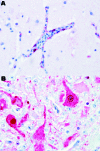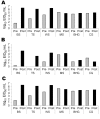Experimental infection of swans and geese with highly pathogenic avian influenza virus (H5N1) of Asian lineage
- PMID: 18258093
- PMCID: PMC2600149
- DOI: 10.3201/eid1401.070740
Experimental infection of swans and geese with highly pathogenic avian influenza virus (H5N1) of Asian lineage
Abstract
The role of wild birds in the epidemiology of the Asian lineage highly pathogenic avian influenza (HPAI) virus subtype H5N1 epizootic and their contribution to the spread of the responsible viruses in Eurasia and Africa are unclear. To better understand the potential role of swans and geese in the epidemiology of this virus, we infected 4 species of swans and 2 species of geese with an HPAI virus of Asian lineage recovered from a whooper swan in Mongolia in 2005, A/whooper swan/Mongolia/244/2005 (H5N1). The highest mortality rates were observed in swans, and species-related differences in clinical illness and viral shedding were evident. These results suggest that the potential for HPAI (H5N1) viral shedding and the movement of infected birds may be species-dependent and can help explain observed deaths associated with HPAI (H5N1) infection in anseriforms in Eurasia.
Figures


References
-
- United States Geological Survey. List of species affected by H5N1 (avian influenza) [cited 2007 May 12]. Available from http://www.nwhc.usgs.gov/research/avian_influenza/avian_influenza_text/htm
-
- Sabirovic M, Wilesmith J, Hall S, Coulson N, Landeg F. Situation analysis—outbreaks of HPAI H5N1 virus in Europe during 2005/2006. —an overview and commentary (version 1) [cited 2006 Jun 30]. Available from http://www.defra.gov.uk/animalh/diseases/monitoring/pdf/hpai-europe30060...
Publication types
MeSH terms
LinkOut - more resources
Full Text Sources
Medical
